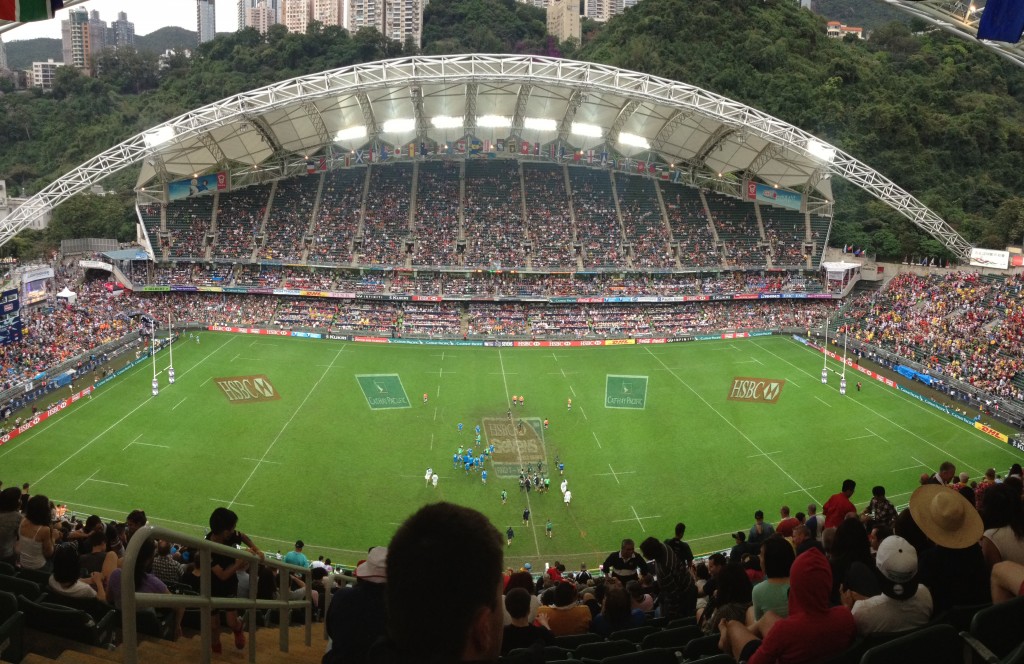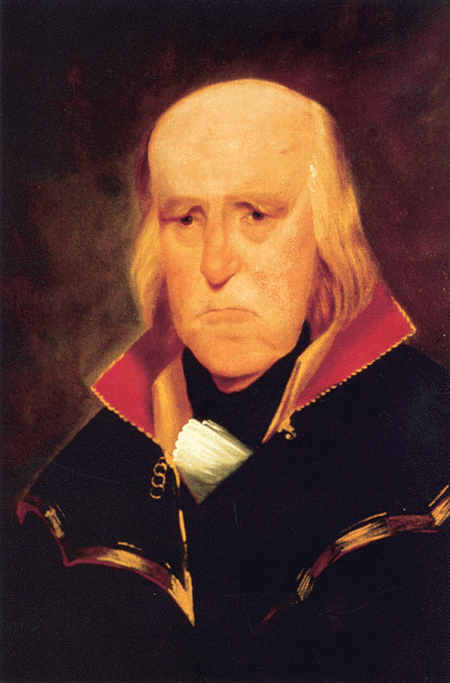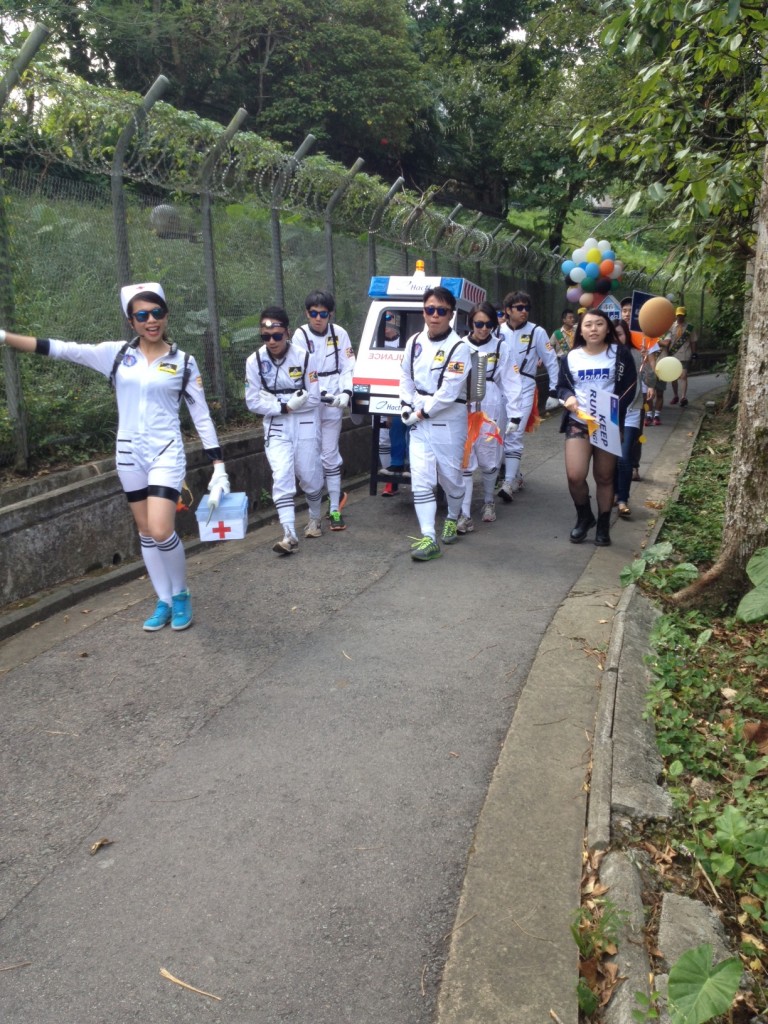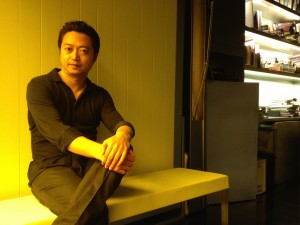Severed heads and escaped convicts? It can only be one thing: the Hong Kong Rugby Sevens. My latest radio story for Only a Game.
Author: Charlie Schroeder
Corinna Chamberlain, aka 陳明恩
Here’s my latest radio story for The World. It’s about Corinna Chamberlain, aka Chan Ming Yan (陳明恩), a Cantopop singer here in Hong Kong.
George Rogers Clark
Here’s a story I wrote about George Rogers Clark for the defunct iPad-only publication, The Daily. It never saw the light of day and I only just remembered I wrote it.
In 1897, Werner School Book Company, released a series of books titled “The Four Great Americans.” The series’ sixth volume, “Four American Pioneers,” told the stories of Daniel Boone, Kit Carson, “David” Crockett and George Rogers Clark. While it’s hard to know how familiar kids then were with these figures, it’s likely that the names of Boone, Carson and Crockett at least ring a bell for most twenty-first century Americans. The same, however, is doubtful for Clark. As the historian Robert M. Sutton has noted, “he is perhaps the most copiously documented American frontier hero, and yet one of the least known.”
Born near Charlottesville, Virginia, in 1752, Clark had bright red hair, grew to about six feet tall and, as the writer Landon Y. Jones observes, had “hooded blue eyes and bristling eyebrows that gave him a commanding presence.” A product of the Enlightenment, Clark became a surveyor and, in 1772 when he was just 19, set out to explore the Ohio River Valley, west of the Appalachians. The Iroquois Confederacy had recently ceded the territory to the British via the Treaty of Fort Stanwix and Clark immediately fell in love with its fertile lands. “A richer and more Beautifull Cuntry than this I believe has never been seen in America yet,” he wrote to his parents.
Clark wasn’t the only colonist attracted to the frontier, and as more and more settlers flowed into the region (known as Kentucky, but still part of Virginia), tensions rose between them and the Shawnee and Chickamauga populations. In late 1777, after years of Indian raids on colonial settlements, Clark — now a major in the Kentucky militia — convinced Virginia governor Patrick Henry to expand the Revolutionary War into Indian Territory. The goal? To capture major British outposts, Detroit in particular. (The British had allied themselves with the Shawnee, Delaware, Wyandot and Mingo to further stem the colonists’ migration.) The plan was approved, and western land grants were promised to any man who’d fight under Clark.
Clark never took Detroit. But in the summer of 1778 he did successfully capture Kaskaskia, Cahokia and Vincennes, three towns in present-day Illinois and Indiana. Soon after Clark took Vincennes, British lieutenant governor Henry Hamilton (nicknamed the “Hair Buyer General” because he purportedly furnished natives with scalping knives and paid them for colonists’ scalps) sent troops to retake the town and a nearby fort the British called Sackville. He succeeded.
What happened next is, according to Robert M. Sutton, “one of the great epics of American history.” On February 5th, 1779, Clark and 170 men started off from Kaskaskia on a frigid 180-mile trek across southern Illinois. Unbelievable as it may sound to modern ears, the troops averaged 25-30 miles a day, despite having to cross numerous streams and endure freezing rains. They reached Fort Sackville on February 23rd, and, upon arrival, Clark ordered his limited force to march around the surrounding hillside “to magnify [their] numbers.” When several Indians allied with the Crown returned from a raid, Clark’s men tomahawked them to death and tossed their bodies in the nearby Wabash River. Hamilton witnessed the entire episode and, thinking that Clark had assembled a large, brutal force, surrendered Sackville the next morning. “George Rogers Clark had become the first early hero of the Revolution,” as Jones puts it, “the ‘Hannibal of the West’ who had driven the British out of the Illinois country.” Two years later Thomas Jefferson promoted the 29-year-old Clark to brigadier general.
The Illinois campaign, as it’s now called, proved to be the apex of Clark’s military career. In 1782, after more than 70 Kentucky militiamen were killed at the Battle of Blue Licks, one of Clark’s political enemies, Virginia Assemblyman Colonel Arthur Campbell, blamed him for the defeat, saying that he had “lost the confidence of the people and it is said become a sot; perhaps something worse.” The accusations about his alcoholism were untrue. But it nonetheless spread rapidly among influential politicians. A few years later, a Spanish spy named James Wilkinson — covetous of Clark’s then-role as Indian Commissioner — undermined him even further by spreading more rumors about his drinking. And Rogers wasn’t just the victim of dirty politics, but of a grasping bureaucracy as well. He’d financed his frontier campaigns with his own money, but his home state of Virginia never reimbursed him. (In a sad irony, his disputed receipts were discovered in the state’s Capitol in 1913.)
By 1789 Clark had entered what Sutton calls the “dreadful treadmill of loneliness, and despair.” Avoiding creditors and drinking quite heavily (the rumor that once followed him having become truth), he grew increasingly bitter about his state of affairs. One night, either drunk or the victim of a seizure, he tumbled into a fire at his Indiana cabin and burned his leg so badly it had to be amputated. With the discovery of ether still another thirty-seven years away, the only “anesthesia” administered to him during the two-hour surgery came from just outside the door, where fifers and drummers played music to lift his spirits. Nine years later he suffered a stroke while living with his sister near Louisville, Kentucky, the city he’d founded forty years earlier. He died shortly thereafter. “His death in 1818,” Sutton writes, “seems to have gone unnoticed beyond the borders of his own state.”
Today, historians debate the significance of Clark’s triumphs. Some say his victories helped to double the size of the original thirteen colonies, thus ensuring that land-hungry colonists could finally move west into what would later become the Northwest Territory and the states of Michigan, Ohio, Indiana and Illinois. Others argue those claims are exaggerated. That may be why so few people outside the Ohio River Valley, an area where he’s frequently memorialized, have heard of him.
As a footnote, it’s worth mentioning what might have been for Clark. In 1783, Thomas Jefferson asked him if he wanted to lead an exploratory expedition to the Pacific. Clark declined, preferring to try his hand at making money. Jefferson kept the idea alive and after the Louisiana Purchase of 1803, named U.S. Army Captain Meriwether Lewis to lead the “Corps of Discovery Expedition” as it was called. In turn, Lewis asked Clark’s younger brother, William, to join him. It took Lewis and the junior Clark nearly two years to reach the Pacific Ocean a journey that cemented their legacy. Perhaps, if George Rogers Clark had accepted Jefferson’s commission, we’d now be as familiar with him as we are with Boone, Carson, Crockett, and, of course, Lewis and Clark.
Hong Kong’s Sedan Chair Race
Here’s my most recent story for NPR’s sports show, Only a Game. It’s about an annual race here in Hong Kong (香港) in which hearty souls race around Mount Kellett road carrying whimsically decorated sedan chairs.
Of interest, sedan chairs were registered in the territory as late as 1962, according to this South China Morning Post article. For a photo of a reposing Air France crew enjoying the luxuries of a coolie-carried sedan chair, check out gwulo.com, a wonderful online repository of old Hong Kong.
Chun Yeung Street Market (at night)
I didn’t know the tram at the end would contain the message it did.
Star-News Reviews Man of War
A very nice review of Man of War appeared in yesterday’s Star-News (Wilmington, N.C.).
Listen here to a story I produced about living in tiny spaces…Hong Kong style.
Interviewed today by Noreen Mir about Man of War. Listen here. 
Man of War Interview
A Q&A shot by David Johnston of DK9 Studio in Pasadena, California.
I’ve always loved taking the tram through this wet market. A must-do for anyone visiting Hong Kong.
I shot this video on my iPhone 4S. I sat behind a man who wiped his booger on the window.





